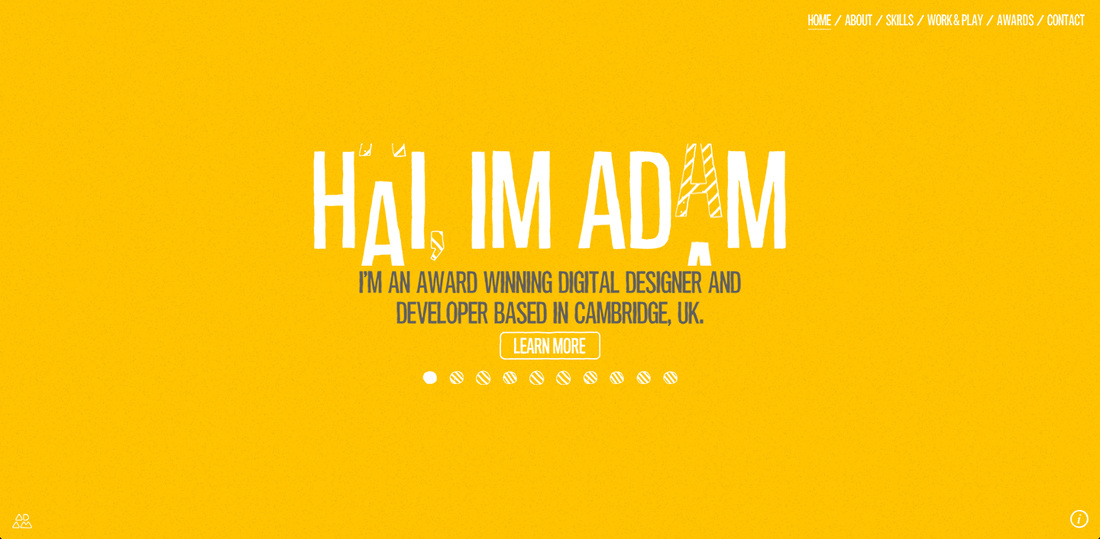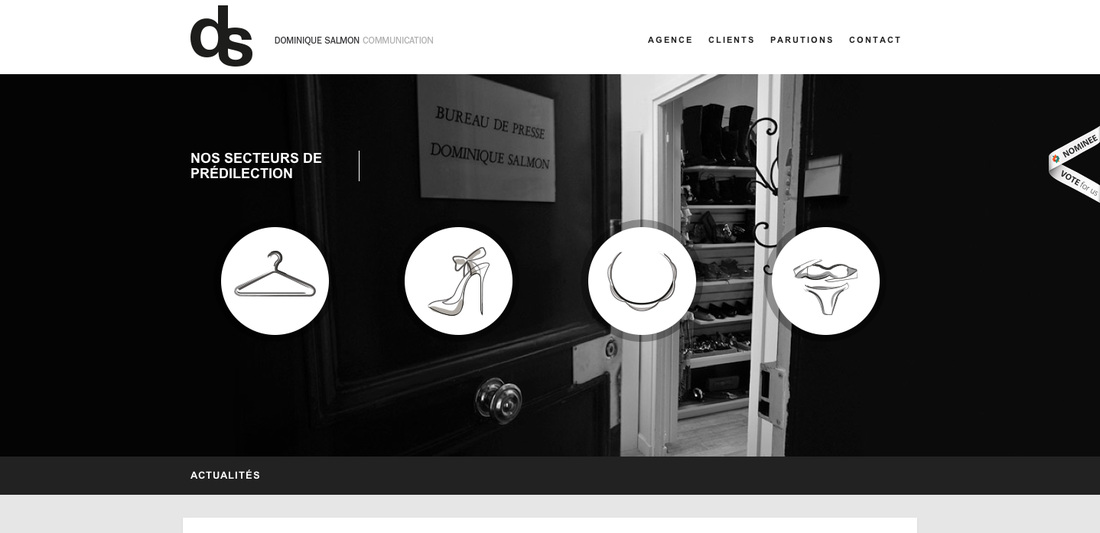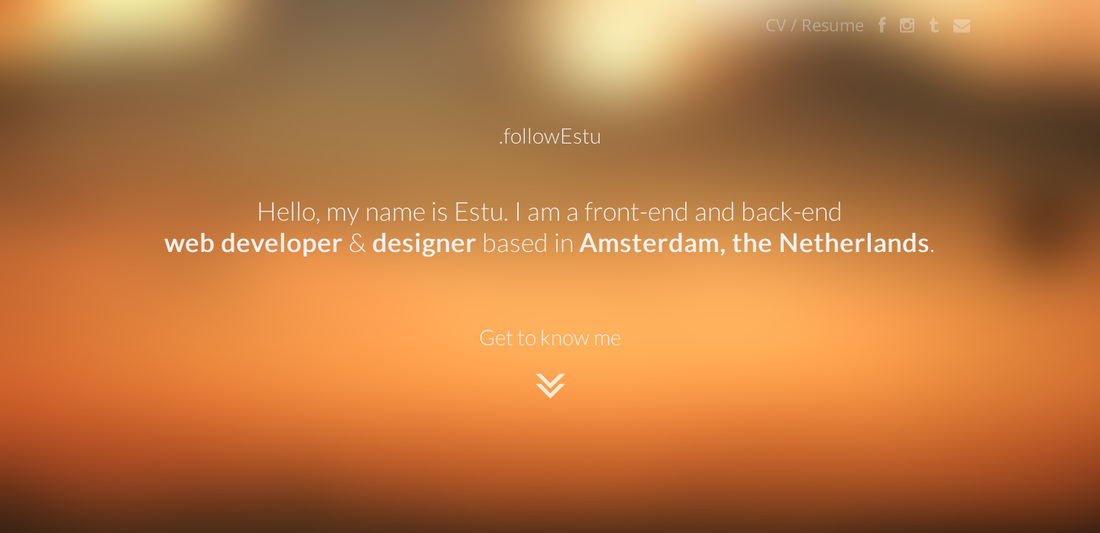I read Friend Me if You Facebook: Generation Y and Performative Surveillance by E.J. Westlake as part of my research. This particular essay was not only critical to the development my thesis but was essential to my continued research as well. It took my existing ideas and bolstered them, and then it shaped the rest of my research. I had never conceived of the notion of social networking being a performance of identity, and when I read that many things seemed to “click” in my head. Something about the word “performance” truly set a new course for my research, as I began using those ideas as keywords and search terms.
 To perform is to put on a new identity and act as though it is your true one. This is literally what I believed to be happening on social media sites while I was enveloped in them: my peers were performing online identities. These were people I knew and talked to in person, and some of the things they subscribed to and did on media platforms such as AIM and MySpace did not make sense to me given their personalities. I originally thought it was a matter of competition. I focused in too greatly on this particular idea. I had put the blinders on, my view too narrow to think about the very core of my argument. I did not see that what these people were doing was not about the competition (though that may still have been a factor). It was truly about the performance. It was about doing things they otherwise would not have because they were putting on a good show for all their peers to see. That Westlake tied this in with Erving Goffman’s ideas about performance of self only sweetened the deal, since his original ideas informed the author’s and my own point of view. The dramaturgical society concept really gives weight to performance identity. If the society at large is already playing this game, then it only makes sense that each individual is partaking in it. That Goffman’s theories are applicable today, in a nearly impossible to predict future, is astounding to me.
That breakthrough for this particular paper has really set me off thinking about how many times I missed the key idea within arguments I have made. Proper word choice and semantics are undeniably essential, it seems, because that was the difference between “clicking” and stagnation. As soon as I thought on the word “performance” over the word “competition,” I had my answers. Oftentimes I have struggled finding the right words to make my argument, so this kind of narrow-sightedness is not surprising to me. The lesson learned here is to always examine my argument, be hyper-conscious of the words I am using - and especially conscious of the words I am focusing on - and then develop my thesis. Also, never discount the vast impact basic research can have on formulating a strong argument. Had I not taken advantage of the tools at my disposal in the Temple Library system, I would likely never have come across this article.
References:
Westlake, E. (2008). Friend Me If You Facebook. The Drama review, 52(4), 21-40.
My friends and I attempted to start a weekly game of Dungeons and Dragons earlier this semester. The whole affair was a miserable failure but not for lack of enthusiasm. We really wanted to continue playing, but our group was too large (surprisingly) and we had no capable Dungeon Master. This got me thinking, “What if there were somewhere we could go to find ourselves someone to lead us?” That’s how I came up with the idea of GameCentral. I tried to keep the website idea fairly simple by not adding in all sorts of unnecessary elements. Its primary function is to serve as a meeting ground for people who want to game together. It is flexible enough to allow users to use it however they want, but it also has enough direction that it is still dedicated to gaming. I envision it as a soon-to-be invaluable tool for organizing gaming sessions.
Inspirations:
http://www.punchbowl.com/
https://www.facebook.com/
http://tappedout.net/
http://meetcarrot.com/
References Lee, B. (2012, September 6). The Game Anthropologist: Episode 8: An appeal for the feminine gamers mystique. Retrieved from http://www.youtube.com/watch?v=WZ4TptAE1E4 Roo. (2009, December 30). 16-bit gems: #10: EarthBound - A History [1/3]. Retrieved from http://www.youtube.com/watch?v=zvyb_oNybOI Jahns, J. (2013, August 17). Paranoia movie review. Retrieved from http://www.youtube.com/watch?v=pMXc1nDSk9Y Carr, M. (2011, April 4). VVVVV – Indie Games Searchlight.Retrieved from http://www.youtube.com/watch?v=TuM3QGBoF5U Links to used images D&D Logo: http://media.aintitcool.com/media/uploads/2013/dndlogo.jpg Settlers of Catan Logo: http://www.toysrus.com/graphics/product_images/pTRU1-16020202dt.jpg MTG Logo: http://lifeisagame.ch/media/image/magic-logo.png 40k Logo: http://static.tumblr.com/bf9ee3bbdcd4d3b7985fa61d1115034c/kyb7l82/DqJmhnwet/tumblr_static_tumblr_static_40k_logo.png Dark Heresy Logo: http://wh40krpgtools.s3.amazonaws.com/images/books/Dark_Heresy_Core-1.jpg Netrunner Logo: http://i1.ytimg.com/vi/VAslVfZ9p-Y/maxresdefault.jpg Furry Pirates: http://www.warehouse23.com/img/full/AG3100.jpg Mansions of Madness Logo: http://upload.snakesandlattes.com/productsimages/m/mansionsofmadness.jpg Arkham Horror Logo: http://seriouslyboard.co.nz/sb3/wp-content/uploads/2010/01/Buy_Arkham_Horror_NZ.jpg Game Store 1: http://articles.millenniumgames.com/wp-content/uploads/2012/03/StoreAboveView1.jpg Game Store 2: http://www.ozarksunbound.com/wp-content/uploads/2009/07/castlehouse2.jpg Game Store 3: http://www.hauntedgamecafe.com/news/wp-content/uploads/2012/06/IMG_20120630_145333.jpg F.R.I.E.N.D.S.: http://images.fanpop.com/images/image_uploads/friends-friends-47129_1024_768.jpg D&D Handbook: http://4.bp.blogspot.com/-dil78qXaSaI/TzFVlDNDI4I/AAAAAAAAEtI/KNBb4wRilM8/s1600/Dungeons_and_Dragon_3.0_Player%27s_Handbook.jpg Miniatures: http://blog.gamesparadise.com.au/wp-content/uploads/2011/09/characters1.jpg Dungeon Master: http://24.media.tumblr.com/tumblr_m3rq26dU2K1rsdqwto1_1280.jpg Map Marker: https://cdn1.iconfinder.com/data/icons/metro-ui-dock/512/Google_Maps.png Tools: http://www.text4all.net/img/tools_icon.png Controller: http://png-4.findicons.com/files/icons/770/token_dark/256/games.png Social Media Cluster: http://social-icons.com/wp-content/uploads/2013/01/minimal_social_media_icons__psd__by_softarea-d5c0f60.png Private Sign: http://www.mydoorsign.com/img/lg/K/Private-Sign-K-5382.gif Member’s Only Sign: http://www.mysecuritysign.com/img/lg/K/STOP-Members-Only-Sign-K-7417.gif Open Sign: http://www.wpclipart.com/page_frames/full_page_signs/business_signs/business_open_sign_red.png Puzzle: http://www.hdwallpapersinn.com/wp-content/uploads/2013/04/puzzle-3d.jpg Engine: http://badparentingstudios.com/wp-content/uploads/2013/06/gameEngine.jpeg Magnifying Glass: http://www.24psd.com/wp-content/uploads/2012/08/search-icon.jpg House: http://www.clipartsfree.net/vector/small/go-home_Clipart_Free.png Map: http://th03.deviantart.net/fs71/PRE/f/2012/025/0/4/simple_map_by_rildraw-d4njruq.png Left Arrow: https://www.iconfinder.com/icons/216437/arrow_back_icon#size=128 Right Arrow: https://www.iconfinder.com/icons/216442/arrow_forward_icon#size=128 Lady w/ WiiBowling: http://www.triblocal.com/barrington/files/cache/2011/01/Bowler-Julia.jpg/460_345_resize.jpg QR Code: http://www.qrstuff.com/images/sample.png LOZ Opening Chest: http://static.giantbomb.com/uploads/original/6/60997/1334495-legend_of_zelda_ocarina_of_time_link_kokiri_forest_sword_chest.jpg LOZ Rupee: http://www.zeldadungeon.net/Zelda06/Walkthrough/05/5b+04.jpg Scott Pilgrim Level Up: http://1.bp.blogspot.com/_4eK0bH0i6ak/TLBsveRbaDI/AAAAAAAAAeE/20hcDCH3vQo/s1600/scott_p_level_up.jpg New Leaf Mall: http://www.desktopreview.com/assets/12360.jpg
The purpose of my website is to accurately represent myself in a creative, professional manner. The site will be used to highlight my work, provide insight into my creative style and influences, and make available contact information for potential clients or employers. I would like the design of the site to reflect a sense of fresh inspiration that does not forget classic styling and craft. I believe in the convergence of the old schools and the new, fusing established concepts with modern touches. I will convey this purpose by my color, font, and pattern choices, particularly the use of experimental geometry. The majority of my site will feature two colors: black and white. I believe this classic combo conveys a sense of elegance. They are serious, yet stylish. The site is wearing a three-piece suit, or perhaps even a tuxedo. This base will set the basic tone of the site. I think black and white is a beautiful combination, and hopefully this will be obvious when those are the most prominent colors on the site. There will be color, however, because the existence of color is what gives black and white its essential qualities. To extend the metaphor, these colored segments will be the tie and the pocket square. Their use is to simultaneously highlight the neutral base and emphasize appealing contrast, but they are used carefully and selectively. Not everyone is as fervent about black and white as I, and I certainly do not want to ostracize myself from a potential client or employer, so making clear the point that I value color will be a pretty important goal for my site. The font I will use is Century Gothic, a sleek and sans-serif font. I believe it strikes a balance between professionalism and creativity. I do not take myself particularly seriously, but I want to convey that I can do serious work. I think the combination of this font with a more relaxed writing style will mirror that quality. I plan to write in a conversational tone so that my personality comes through clearly. I love to have fun, and I believe connections are made their strongest when two people have a good time together. There is a reason business deals are made on the golf course. Adam Hartwig, a designer from the United Kingdom, has created a personal portfolio site that inspires me ( http://www.adamhartwig.co.uk). While the aesthetic is more wholly playful than I envision my site to be, I really like his language. It is casual, but it is also telling that he knows his craft well. He does not take himself too seriously, but the visitor knows he is seriously skilled. This detail speaks to me resoundingly. The interactivity of his site is beautiful, however that is outside my current ability. I would love to incorporate something like it someday! Upon investigation of the web, I stumbled across the site of Dominique Salmon Communication ( http://dominiquesalmon.com). I like the way it is structured; there is a good amount of white space up top, a very sharp black and white photo, and overtop that photo is a simple set of circles, each linking to a specific portion of the site. The tone of the site may be too serious for my tastes, but I do like the use of space and tasteful geometrics. A third site that inspired me is the personal portfolio of designer Etsu ( http://followestu.com/). On a technical note he takes advantage of some awesome capabilities of HTML5, and from a design standpoint he makes great use of the horizontal sectioning that is trending amongst web designers. I have completely fallen for this aesthetic, and if I could include it in my own site, especially a static image in the background that can be scrolled past, only to be a different image further down the page, I would be ecstatic. The site is simple and clean, casual, and also professional. Etsu has found a good balance, and that is something I strive to achieve.
References:
Bourn, J. (2010, December 5). Color Meaning: Meaning of The Color White. Bourn Creative. Retrieved October 23, 2013, from http://www.bourncreative.com/meaning-of-the-color-white
Bourn, J. (2010, December 15). Color Meaning: Meaning of The Color Black. Bourn Creative. Retrieved October 23, 2013, from http://www.bourncreative.com/meaning-of-the-color-black
Johnson, J. (2013, September 5). Use Abstract Geometry to Create Stunning Designs. Design Shack. Retrieved October 23, 2013, from http://designshack.net/articles/inspiration/use-abstract-geometry-to-create-stunning-designs/
We create for ourselves online personas that allow us to present to the world images of what we desire to be. For me, AOL Instant Messenger was what introduced me to this concept that eventually controlled me for a period of time. Away messages were the first incarnation of what has now grown to be the Facebook status update; what I posted as my away message said a lot about who I was. If I were an angsty music kid, I would leave music lyrics that relayed how my parents were the cause of all my problems. If I were laid back and too cool to care, I would leave a simple “bbl” (be back later) message. What I left for others to see defined me, even outside of the online world.
MySpace took this idea to new heights. The profile picture was born, and with it came the ever-existent competition to have the coolest picture with the most comments. Who and what were in your picture, where you took it, how you posed, along with countless other things now mattered. This picture defined you. There was a spot for your “top friends,” and if you maneuvered this improperly, there were real world implications. People could be angry with you because you were not in their “top three,” and friendships were either strengthened or eroded by who was in your coveted “top friend” spot. Of course there were also the surveys you could post to your “about me” section, in which you detail everything cool about yourself. I remember taking the opportunity in one of these surveys to let all my peers know that I, eighth grade Jonathan Kaeser, was at one point in “possession of illicit substances.” This was so I looked cool, mysterious, and more grown up than those who viewed my profile. The truth was I had an older friend whose older sister’s older boyfriend showed me an ounce of marijuana. I never touched the stuff, and it certainly never crossed my mind to smoke it. But, again, what I posted online defined my identity in the real world.
Then high school happened, and the age of Facebook began. We already knew how to play the game: have a cool profile picture, friend your buddies, plug them in to a top friends module, write interesting stuff about yourself in your about me section, etc. Many things, such as top friends and general profile comments eventually wore away, but what really stuck (and what the primary use of Facebook became) were what photos you posted or were tagged in. The idea of a “Facebook photo” became a real thing that people cared about in real life. We would specifically take time to compose good pictures for the sole purpose of being posted on Facebook and getting loads of likes and comments. It was not irregular to hear “Did you see on Facebook [such and such],” and “Oh yeah, I saw that on Facebook.” Romantic relationships were defined by whether or not they were “Facebook official.” Life became a game, and Facebook was the scoreboard.
Twitter, Instagram, and Snapchat have recently picked up steam as identity forging powerhouses. Twitter is the mobile status update, Instagram the newest medium to show the world how interesting what you are doing is, and Snapchat builds upon the concept and implications of the profile picture.
These new forms of online identity are also a new form of communication. Social media and the Internet have dramatically changed how human beings interact. We can also communicate over numerous different sources, each of which has been specialized for a certain function. E-mails are accepted as a form of professional communication, while instant messaging is a medium for casual conversation. YouTube allows video communication from one person to the masses, businesses communicate to customers through e-mail subscription lists, and Kickstarter allows inventors, poets, directors, and designers to communicate their ideas and seek funding. The Internet, if nothing else, is a veritable playground of communication resources.
Though incredibly empowering, the omnipresence of the Internet may have its communicative drawbacks. It has arguably made people less gregarious in everyday life. For the entirety of my semi-adult life the Internet has been accessible via the smart phones that seemingly everyone has. Instead of chatting with someone on the bus or in the waiting room, we pull out our cell phones and access the Internet or use some web-based app. We have become more insular, only affording regular conversation to those whom we know, whether they are physically present or not. We are more willing to engage with strangers online than we are in real life.
The Internet, with all its pros and all its cons, has ushered in a communication boom. We now regularly communicate in ways that were previously impossible. All manner of barriers have been broken down because of this boom. People we were previously incapable of sending a message to can now possibly hear what we have to say. Our ideas can be spread out across a vast digital landscape for anyone to hear. To be sure, we are living in a communication renaissance.
|






 RSS Feed
RSS Feed